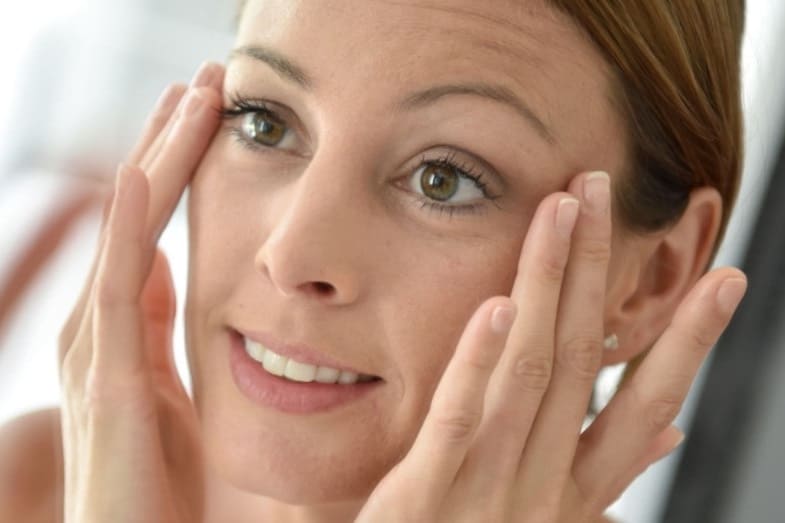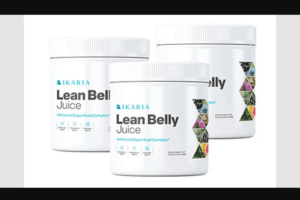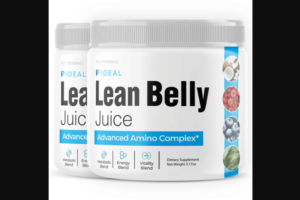How long does it take for Botox to work? If you just got Botox, or you are planning on getting Botox, you likely want to know how long before you’ll see results. In this article, I’ll describe how long it takes for Botox to work so that you know what to expect.
How long for Botox to work? Botox will start acting on your skin 3 to 4 days after injection. The maximum effect of Botox occurs after 10 to 14 days. So expect to wait about two weeks for the botox to work fully.
Botox comes from Clostridium botulinum’s toxin that works by paralyzing or weakening the muscles to smooth the skin and reduce facial wrinkles.
Read on to learn more about how long it takes for Botox to work and how to care for your skin after getting Botox.
How Long Does It Take for Botox to Work?
Botox injections are used primarily to reduce the appearance of facial wrinkles.` Experts also use it to treat other disease conditions. These diseases include hyperhidrosis (excessive sweating), dystonia or neck spasms, lazy eye, and overactive bladder.
Take note that the bacterium, Clostridium botulinum, is actually a pathologic microbe that causes botulism. The microbe’s toxin destroys the body’s nerves and weakens them. This effect usually starts with the facial muscles and then gradually spreads to the torso, body, and legs. However, in small doses, the toxin can help reduce your facial wrinkles by weakening them.
How long for Botox to work? The length of time for Botox to work is about two weeks at the maximum. The length of time that the effects of Botox stay depends on various factors.
How long will the Botox’s effects work? Some factors affect the effectiveness of Botox in your body. These factors are as follows:
1. The Expertise of the Injector
The skill of your skincare expert is crucial to getting the desired results. If your injector is not competent, she may inject the microbe into the bloodstream, causing complications. And if she injects the toxin too superficially, it will cause bruises.
For Botox to work effectively, you must ensure that the cosmetic dermatologist is licensed and board-certified. She must have a lot of skills from experience too. The cost may be expensive for licensed injectors, but I’m sure you would rather pay more than placing your skin’s health and well-being in the hands of an incompetent person.
2. Type of Muscles/Wrinkles
Thicker and bigger muscles require more injections to get the desired result. So, the length of treatment would depend on the muscles you’re trying to treat. Your eye muscles (crow’s feet) are typically thicker, so you would need several treatments for the best results.
3. Number of Injections
You should have a regular session with your dermatologist, as the injections are administered not only once but several times until the toxin takes effect. Thus, schedule a regular checkup with your specialist to repeat the procedure and monitor your progress.
4. Lifestyle
People with a sedentary lifestyle could not eliminate Botox rapidly; so, the effect could last longer. On the other hand, physically active people would eliminate the Botox toxin more quickly. Thus, if you’re an athlete, you may have to increase your regular Botox injections.
5. Body Metabolism
How fast your body reacts to the injection would depend on your metabolism too. The liver is the primary metabolic organ in your body. It is responsible for detoxifying and metabolizing products for proper excretion. When your liver and kidneys are dysfunctional, you may have a problematic reaction to the injection.
6. Amount of Botox Injections
The amount of Botox injected may prolong or shorten the effects of Botox. Regular Botox injection would make the toxin more effective on wrinkles.
7. Facial Habits
Extreme facial expressions can decrease the effect of Botox. If you move your facial muscles a lot, the result will not be as effective as when you rest your facial muscles. Moving them always will not allow the toxin to settle down and do its actions. You can smile, laugh, and frown but don’t overdo it.

Types of Botulinum Toxin Injection
There are four general types of botulinum toxin injections. They are as follows:
1. Botox
This Botox injection can start showing its effect after a few days. It’s more expensive than Dysport; however, Botox’s effects last longer for three to six months. The success of any of these injections would depend on your injector’s skills and how you respond to them.
2. Xeomin
Xeomin lasts longer than Dysport and Botox. The product does not need refrigeration because it contains no unnecessary additives. Xeomin also takes effect within five days and has its maximum effect after ten days. The result could last for three to six months as well. Xeomin is an excellent alternative to Botox when the person has developed a resistance to Botox.
3. Dysport
Dysport’s effects can also last for four to five months. The toxin is more dilute than Botox and spreads into a broader area than Botox. Dysport works more efficiently in reducing crow’s feet wrinkles than Botox and is cheaper. Reportedly, it also works quicker, with results seen after two to three days.
4. Myobloc
You can use Myobloc when Dysport and Botox are not working. The toxin comes from the botulinum type B strain and is typically used to treat severe dystonia or spasms in the neck. You can observe the effects after five days or within a week. This effect could last from three to six months.
We’ve answered the question, “How long does it take for Botox to work?“ Now, let’s look at the possible side effects of a Botox injection.
Side Effects of Botox Injections
1. Death and Severe Side Effects
There can be severe side effects of Botox injections, such as death and serious health problems. That’s why it’s crucial to choose your cosmetic dermatologist carefully. Pick one that is board-certified and has performed several Botox injections. He/she must have performed several injections and has the needed skills and expertise to perform the procedure.
2. Botulism
Excessive doses of Botox in one injection can cause the disease itself, botulism. Botulism is the weakening of the muscles in the eyes, throat, mouth, and face that can spread to the legs, body, or torso.
3. Dyspnea
You may experience dyspnea or difficulty breathing due to weakened muscles in your throat, mouth, and nose. When you experience this, consult your doctor immediately. Don’t wait until your breathing is completely blocked.
4. Eye Problems
Your eyes are affected when you have botulism. Excessive injection of Botox weakens your eye muscles to the point where you can no longer control them.
5. Heart Problems
Due to the weakening of your muscles, your heart can suffer as well. The heart’s muscles may not be able to pump blood into your veins. This effect is a serious condition that could lead to death.
6. Trouble Swallowing
You have trouble swallowing due to the paralysis or weakening of your throat muscles. This effect will prevent you from eating and could exacerbate a more severe condition.
As soon as you observe any of these symptoms, consult your dermatologist immediately or go to your area’s nearest health facility.
If the injection has caused you harm or injury, you can file for medical malpractice. Be ready to present pieces of evidence showing that the dermatologist has violated the standard of care. You’ll need a lawyer to facilitate the process too.
Pros of Botox Injections
When done correctly, Botox injections would reduce your wrinkles and gives you a glowing and smooth face. You would certainly look younger without facial wrinkles. The injections reduce wrinkles in places where you got treated. The common areas are usually the forehead lines, crow’s feet, frown, and bunny lines.

Cons of Botox Injections
Side effects may occur (as described above) when the dermatologist is not skilled enough. You can even contract the disease and die from adverse reactions. So, it’s crucial to get a competent dermatologist to perform the injections. You are putting your life at risk with every injection. Your health should be your foremost priority.
There are other alternatives to Botox injections, such as exercising regularly, hydrating yourself properly, eating the right food, and getting enough sleep. You may want to try these healthy practices first before deciding to get those injections.
Nonetheless, if you really want to get a Botox injection, get the best services in your area from a certified cosmetic dermatologist. A cosmetic dermatologist is a doctor who specializes in cosmetics and skincare. Check if the person is a doctor or just a beautician posing as a dermatologist.
Tips on How to Ensure Botox Works Faster and More Effectively
1. Choose a Competent Dermatologist
As previously emphasized, your choice of physician is vital for the success or failure of your treatment. Choose your dermatologist from a skin center specializing in Botox injections, and you will not have to worry about any side effects.
You may experience slight redness, swelling of the skin, or both, but it will subside after two to three days. So, don’t panic.
2. Set Regular Treatments
You should set up regular treatments. Having one injection is not enough to maintain your wrinkle-free face. The muscles will tighten up again after a while. Hence, experts recommend that you should have at least an injection every three months.
However, do not overdo the injections as the muscle may remain relaxed for a more extended period, causing harmful health conditions.
You can also couple your injections with other compatible facial care treatments that your doctor approves. But, don’t just apply facial creams without your doctor’s approval.
3. Avoid Stress
As much as possible, avoid stress and stay happy. Happiness could improve your overall health and help your body stay healthy. A healthy body will help you hasten the good effects of Botox injections.
4. Put off Exercise
Exercise will increase the elimination of Botox from your body, reducing its effectiveness. Put off exercising 24 hours after treatment. The Botox toxin needs to stay in your skin for an ample amount of time to take its effect. Also, elevate your face when you sleep for the first three days following the injection.
5. Take Zinc
Zinc supplements help allow the good effects of the Botox injection to last longer and work more effectively. The skin physician may prescribe a zinc supplement. You could also eat zinc-rich foods, such as oysters, lobsters, crabs, nuts, and meat.
6. Avoid Rubbing Your Face
Don’t rub your face because this action can cause adverse reactions, such as toxins spreading to inappropriate places on your face. You should observe this precaution for 24 to 48 hours.
7. Move Your Facial Muscles
You can move your facial muscles gently to allow even distribution of the injection in the intended areas. Smile and laugh if you must. But don’t overdo it, as it can be counter-productive.
8. Avoid the Sun
Researchers have proven that the sun’s rays hasten the formation of wrinkles and skin damage. They also increase skin cancer risk. So, while under treatment, you have to wear a protective covering when under the sun. A hat or umbrella can protect you from the sun’s harmful rays. Of course, after treatment, you still have to protect your skin from the sun.
Conclusion – How Long Does It Take for Botox to Work?
How long for Botox to work? Generally, Botox injections start working after 3 to 4 days and achieve their maximum effect after 10 to 14 days.
The Botox injection certainly works, but ensure that you are getting the services of a board-certified specialist from a reliable skin center that regularly performs the procedure.
Also, ensure that you get enough injections without overdoing it, as the effects could prove fatal when you overdose. Under-dosing would also produce inferior results. So, make sure you get sufficient injections performed by a certified dermatologist to achieve the best results.
Read next:
What Is Caramel Skin Tone? [Facts and Makeup Tips]
Can a Tan Last Forever? What Happens When a Tan Fades?
High Nose Bridge – What Is It? Vs Low Bridge? How-to Shape?]

![FlexNet Licensing Service [What Is It and How Does It Work?] flexnet licensing service](https://howchimp.com/wp-content/uploads/2021/04/Flexnet-licensing-service-300x200.jpg)


![How Long Does DayQuil Last? [How Long It Stays in Your System] how long does dayquil last](https://howchimp.com/wp-content/uploads/2021/06/how-long-does-dayquil-last-300x200.jpg)
![How Long Does DHL Take to Deliver? [DHL Delivery Time] How Long Does DHL Take to Deliver](https://howchimp.com/wp-content/uploads/2021/05/how-long-does-DHL-take-to-deliver-300x200.jpg)


